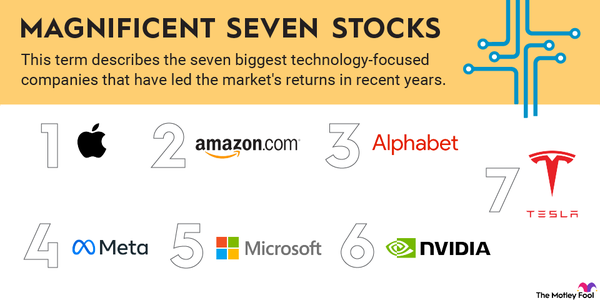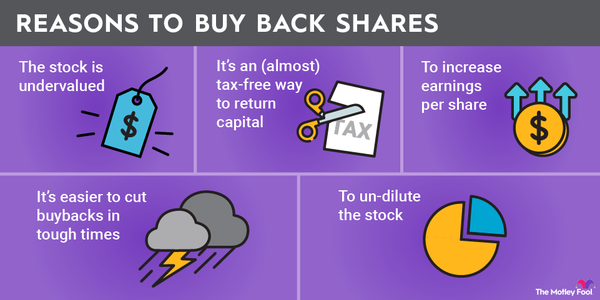Steel and aluminum are foundational commodities that underpin large sectors of the economy, from transportation and construction to consumer staples and energy. The United States has historically relied on some imports of steel and aluminum to keep pace with demand. In 2024, 47% of U.S. aluminum consumption was from imports, and 13% of steel use was from imported steel.
However, on March 12, a 25% tariff on steel and aluminum imports and derivative products is expected to be implemented.
The Motley Fool has compiled data on steel and aluminum imports to help investors understand exposure, risks, and potential opportunities that come with the tariffs.
Where does the U.S. import steel from?
Canada is the top source of U.S. steel imports, followed by Brazil, Mexico, South Korea, and Vietnam.
The United States imported nearly 6 million metric tons of steel from Canada in 2024, roughly 23% of its total steel imports that year. Brazil accounted for 4 million metric tons, or about 16% of all imports. Mexico exported just over 3 million metric tons of steel to the U.S., about 12% of U.S. steel imports.
Steel imports from Canada have hovered between 5 million and 6 million metric tons for over a decade, while imports from Mexico have stayed between around 2.5 million and 4.5 million metric tons.
Steel imports from China peaked in 2014 at 2.9 million metric tons and have rapidly declined since then due to U.S. tariffs and trade remedies targeting Chinese dumping and subsidies. Steel from China accounted for 1.8% of all U.S. steel imports in 2024, down from 8% in 2014.
Where does the U.S. import aluminum from?
Canada is the top source of U.S. aluminum imports, followed by the UAE, China, Russia, and Bahrain.
The U.S. imported just over 3 million metric tons of aluminum from Canada in 2024, roughly 58% of total U.S. aluminum imports that year. Since 2010, Canadian aluminum has accounted for between 40% and 60%, roughly, of U.S. aluminum imports.
The UAE is a distant second, supplying 350,000 metric tons of aluminum to the United States, around 9% of U.S. imports.
Chinese aluminum imports have fallen by two-thirds since they peaked at 643,000 metric tons in 2017. The U.S. imported 222,000 metric tons of aluminum from China in 2024, about 2% of its total aluminum imports.
How much steel does the U.S. produce?
The United States produced 81 million metric tons of raw steel in 2024, up from 72.7 million metric tons in 2020. The United States is the fourth-largest producer of raw steel in the world, behind China (990 million metric tons), India (150 million metric tons), and Japan (85 million metric tons).
How much aluminum does the U.S. produce?
The United States produced 670,000 metric tons of primary aluminum in 2024, down from 1 million metric tons in 2020 and 1.1 million metric tons in 2019. China is the world’s largest producer of aluminum by far. China pumped out 43 million metric tons of aluminum in 2024. India was a distant second, producing 4.2 million metric tons of aluminum that year.
Notably, the United States has the capacity to produce 1.36 million metric tons of aluminum but is using roughly half of it. Just two companies -- Alcoa (NYSE:AA) and Century Aluminum (NASDAQ:CENX) -- are currently producing primary aluminum in the United States across four smelters.
What investors should know about steel and aluminum tariffs
President Trump has announced a 25% tariff on foreign steel and aluminum, as well as derivative products, to be imposed on March 12. Unlike the steel and aluminum tariffs imposed in 2018, there will be no product exclusions, and the product scope is broader. Prior exemption agreements the United States struck with many major steel- and aluminum-exporting countries will be terminated.
Steel and aluminum producers in the United States could stand to benefit from the tariffs -- data shows that U.S. steel and aluminum production increased in 2018 and 2019 when tariffs on those products were in effect. However, there is limited upside given that adding new production capacity to offset higher-priced imports, particularly steel production, would take massive investments and years of infrastructure and talent development.
There is also a risk of foreign retaliatory tariffs, as occurred the last time steel and aluminum tariffs were put in place. That could pose a risk to other sectors of the U.S. economy. Studying which U.S. products major steel and aluminum exporters targeted in response to the previous tariffs would be instructive for investors as the new tariff deadline approaches.
Sources
- U.S. International Trade Commission (2025). “Aluminum Import Monitor.”
- U.S. International Trade Commission (2025). “Steel Import Monitor.”
- U.S. Geological Survey (2025). “Aluminum Statistics and Information.”
- U.S. Geological Survey (2025). “Iron and Steel Statistics and Information.”































































































